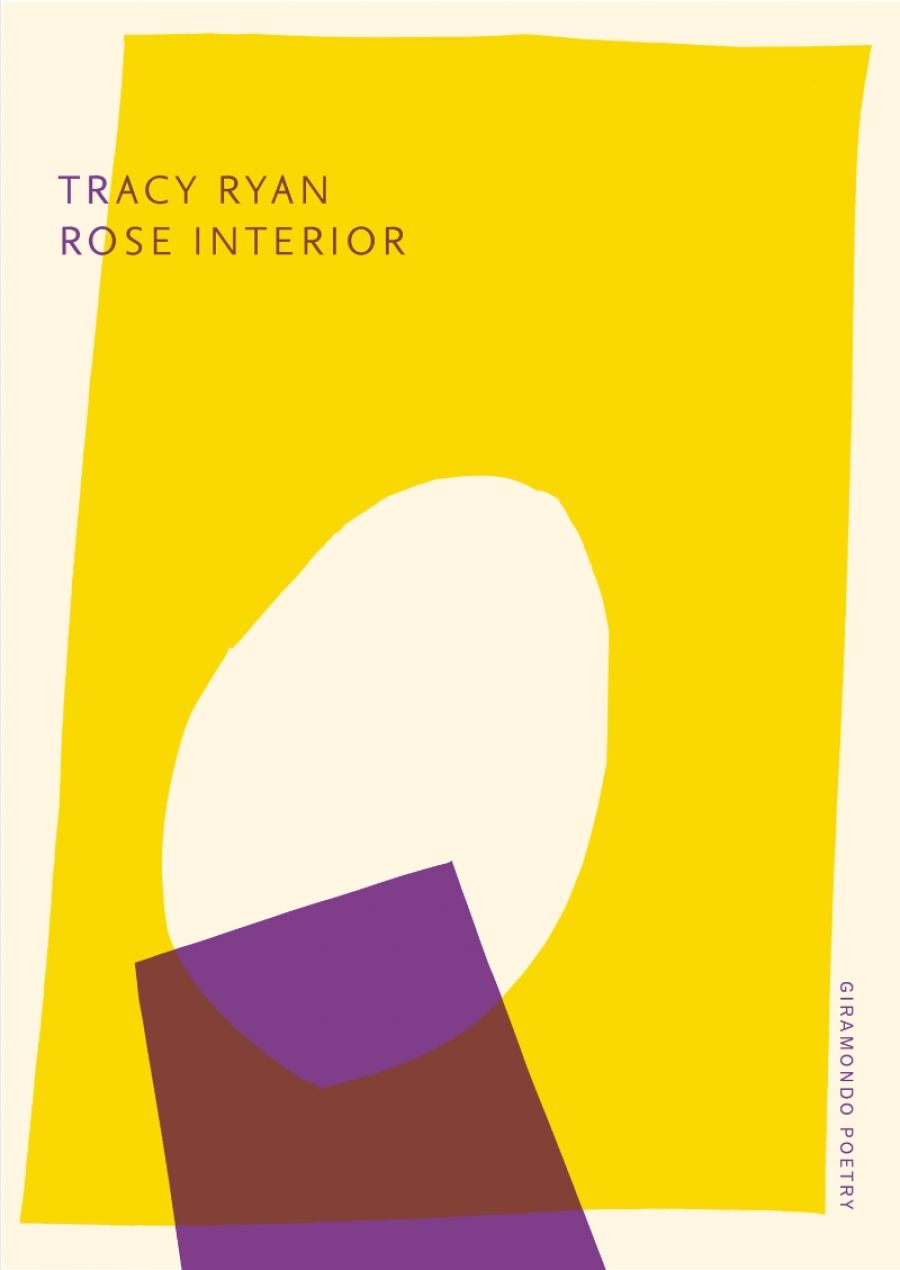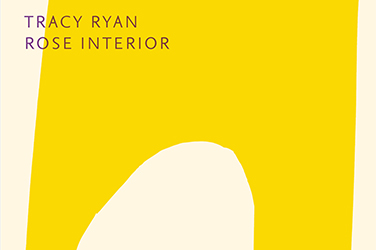
- Free Article: No
- Contents Category: Poetry
- Review Article: Yes
- Article Title: ‘A house before dawn’
- Article Subtitle: Tracy Ryan’s poetics of domesticity and precarity
- Online Only: No
- Custom Highlight Text:
Umberto Eco once described the text as a ‘lazy machine asking the reader to do some of its work’; to contribute, in other words, to the production of meaning. Poetry has a particular reputation for being demanding, but Tracy Ryan’s tenth poetry collection, Rose Interior, isn’t challenging in the way that Eco envisages. It is less about engaging readers in the masculinist energy of the ‘machine’ and ‘work’ than about inviting them into a feminine world of domestic spaces and quotidian phenomena ...
- Featured Image (400px * 250px):

- Alt Tag (Featured Image): Maria Takolander reviews 'Rose Interior' by Tracy Ryan
- Book 1 Title: Rose Interior
- Book 1 Biblio: Giramondo, $24 pb, 112 pp
- Book 1 Readings Link: booktopia.kh4ffx.net/4eYboG
Such an aesthetic, committed to redeeming the marginalised and typically feminised as worthy of interest, is inseparable from the feminism that has marked Ryan’s career as poet, novelist, and activist. It sits deliberately at odds with the entitlement and assumptions of Eco’s masculinist literary vision. It presents its own challenge to the reader, setting a task that is difficult by definition: to attend to that which rarely commands our attention.
 Tracy Ryan (photograph by John Kinsella/Giramondo)
Tracy Ryan (photograph by John Kinsella/Giramondo)
Rose Interior is divided into three parts, the first of which focuses on domestic spaces. These poems are fascinating for their almost reluctant interest in the ‘poltergeistish’ – a neologism from the poem ‘Release’ – though the gothic aesthetic here is so pared back that it too exists only on the periphery. When the supernatural promises to appear in an explicit fashion, as in ‘Ghost Story’, it is emptied of its supernaturalism. The poem begins with the opening line, ‘Sometimes I catch the other me’, recalling Jorge Luis Borges’s ‘Borges and I’, but here the doppelgänger is revealed as an effect of banal housebound repetition, which produces automatic and unconscious action. The experience of a double is an encounter with a domesticated self
… who’s already
filled the pot with water as I just
turned to do, who’s put the cups out
right when I bent to get them, or
cheekily drunk my tea when I was sure
a last mouthful was still there.
The unsettling effect of routinised action is intensified by the isolation of the poet in the home. Indeed, some poems give rise to a muted sense of claustrophobia and even paranoia. ‘Source’, which reflects on how ‘sounds worry / in a house before dawn, alone’, suggests how such conditions might engender pathology. In the concluding lines, the poet attempts to reassure herself: ‘Surely it’s only neurosis if / there wasn’t a noise – it was nothing.’
The trope of women haunting houses or being haunted by them is a staple of the gothic genre, from Bertha in Charlotte Brontë’s Jane Eyre to Nicole Kidman’s character in The Others. Ryan’s gothic aesthetic may be infinitely more subdued than that of these intertexts, but her poems extend the genre’s interest in the uncanny nature of homes, particularly with regard to the women who have historically been confined to them. Women can disappear from the world there; history teaches us that they have done so. The quietness of Ryan’s poems at times re-enacts that disappearance, though other poems resist the vanishing of the feminine. ‘Kitsch’, for example, celebrates the ornaments coveted by a mother and grandmother, those ‘whatnots’ filling the house like ‘children’.
This is one of the few poems in which a masculine presence becomes apparent. Notably, it is associated with a violent act, a ‘window-cracking / ashtray that missed the mother’s head completely’. The other poem featuring a male character, however, is a striking love poem. ‘Etruscan Love Song’ imagines the home as a sarcophagus in which the married couple is preserved, albeit in ways that give no indication of ‘whatever / we were or are or will be’.
That escape from the captivity of domesticity – associated here with convention and stasis – is more explicitly enacted in the poems that venture outside to reflect on flora and fauna. These poems, however, remain committed to the domesticated and undervalued, such as the hedge or the red-crested pochard. Some poems escape Australia, exploring European places the poet has occupied. These northern-hemisphere homes are typically rendered unhomely by the effects of climate change. ‘Snow Prognosis’ begins: ‘Nothing can lure it down. / We long for the old sense of nuisance, / rushing to get the shopping done, / wintering in.’ In the stunning poem ‘Cockle Stove, Breny-Haus’, an ode to a European-style tiled woodstove, radiant heat persists ‘like stars even after / the heart’s burnt out, the source is lost’.
It is perhaps unsurprising that Ryan has turned to the home at a time that has seen so many of us restricted there. Indeed, the third part of Rose Interior addresses the Covid-19 pandemic, with a particular focus on home schooling. ‘Sports for One’ captures the absurdity of the experience, ‘Nth Wave’ (originally published in Australian Book Review) the fatigue of endless lockdowns, ‘Penultimatum’ – a poem about a child’s return to school – the anxiety.
Given our perilous times, it is also unsurprising that the collection tends towards the elegiac, also notably conceived in relation to the feminine and quotidian. ‘Perishable’ begins ‘Your days are like your ova / a fixed number’, whereas in the superb ‘Phenomenology’ we read:
Till now you never fully understood
that even a saucepan reaches
its natural end
that Things have a narrative arc
though they outlast
a pharaoh in his box, their time will come.
Tracy Ryan’s is a poetics of domesticity and precarity, of homes and lives always on the threshold of breaking down or vanishing. As such, while Rose Interior speaks quietly, it nevertheless speaks urgently to our crisis-plagued times.


Comments powered by CComment